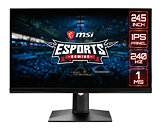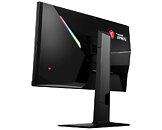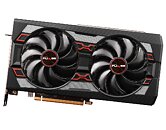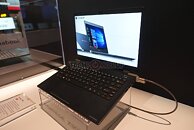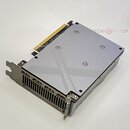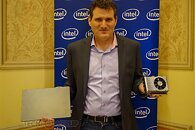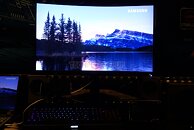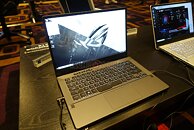
MSI Launches Three New Monitors: 2x 1080p 144 Hz Panels, Availability of 240 Hz 1080p IPS MAG251RX
MSI today launched three new monitors on their Optix lineup, catering to budget-conscious gamers that want fast, responsive gameplay. MSI's new Optix G241 and Optix G271 differ solely in diagonal (one is 24", the other 27"), and both offer a 1080p, IPS panel with support for refresh rates up to 144 Hz and up to 1 ms response times. Both these monitors feature support for AMD FreeSync, max 250 nits brightness, and connectivity is taken care of by 1x DisplayPort 1.2a and 2x HDMI 1.4b. The MSI Optix G241 will be available for $189.99, whilst the 27" MSI Optix G271 will go for $239.99.
More interesting for gamers that want crazy refresh rates, however, is the MSI Optix MAG251RX. This monitor keeps the 1080p resolution and IPS panel, but brings refresh rates up to a crazy 240 Hz with up to 1 ms response time. MSI has also "upgraded" the Variable Refresh Rate (VRR) technology up to NVIDIA's G-Sync. There's HDR 400 support (don't read that much into that though; it's the bare minimum for entry and far from a quality HDR experience). It also sports USB-C connectivity and RGB customization on the back of the monitor via MSI's Mystic Light software. The MSI Optix MAG251RX will be available for a still conscious $359.99, provided you didn't stop reading at the mention of a 1080p panel.
More interesting for gamers that want crazy refresh rates, however, is the MSI Optix MAG251RX. This monitor keeps the 1080p resolution and IPS panel, but brings refresh rates up to a crazy 240 Hz with up to 1 ms response time. MSI has also "upgraded" the Variable Refresh Rate (VRR) technology up to NVIDIA's G-Sync. There's HDR 400 support (don't read that much into that though; it's the bare minimum for entry and far from a quality HDR experience). It also sports USB-C connectivity and RGB customization on the back of the monitor via MSI's Mystic Light software. The MSI Optix MAG251RX will be available for a still conscious $359.99, provided you didn't stop reading at the mention of a 1080p panel.


